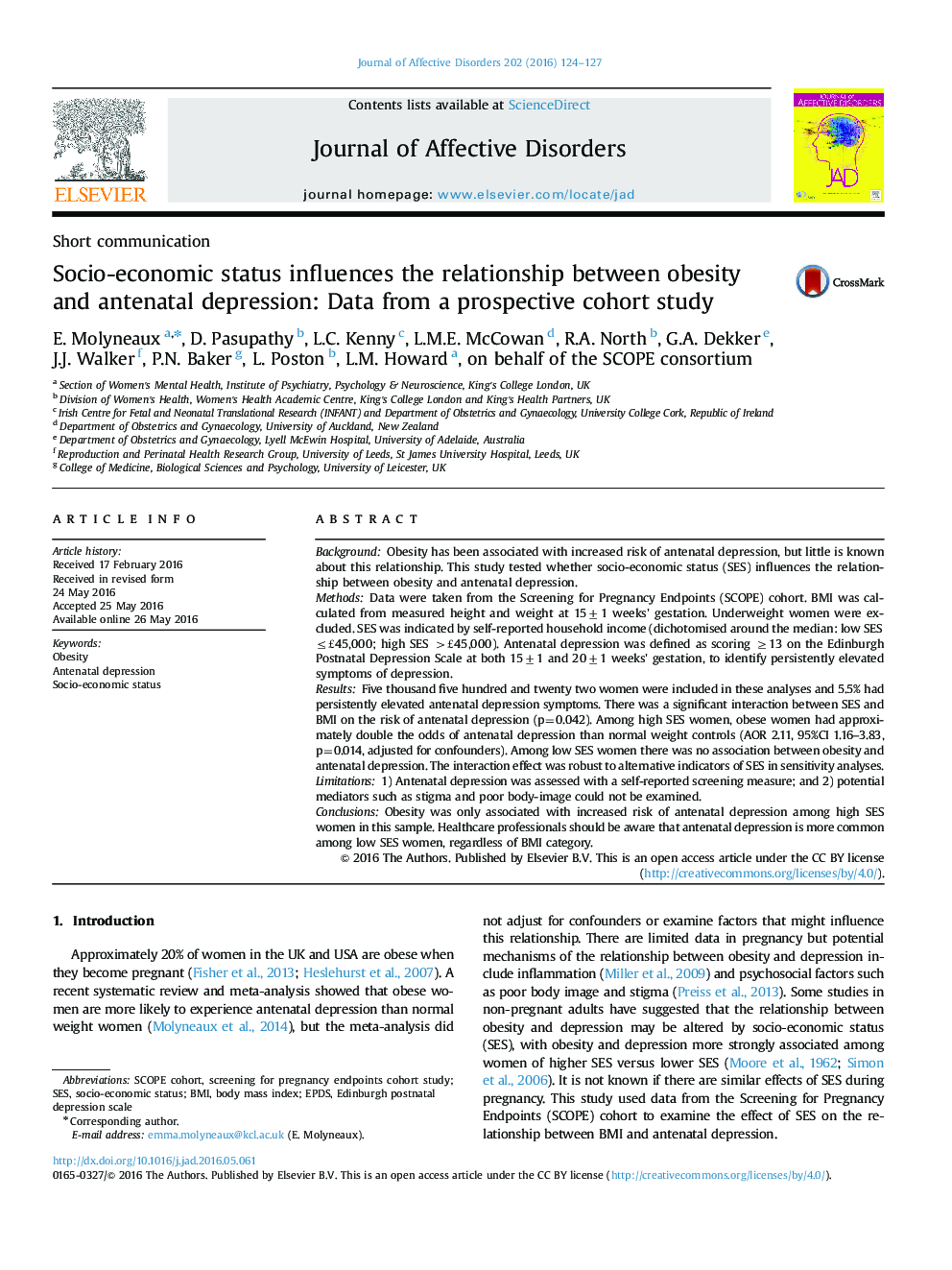| Article ID | Journal | Published Year | Pages | File Type |
|---|---|---|---|---|
| 6229939 | Journal of Affective Disorders | 2016 | 4 Pages |
â¢High SES obese women had twice the odds of antenatal depression than high SES normal weight controls.â¢There was no significant association between obesity and antenatal depression among low SES women.â¢Antenatal depression was substantially more common among low SES women, regardless of BMI category.
BackgroundObesity has been associated with increased risk of antenatal depression, but little is known about this relationship. This study tested whether socio-economic status (SES) influences the relationship between obesity and antenatal depression.MethodsData were taken from the Screening for Pregnancy Endpoints (SCOPE) cohort. BMI was calculated from measured height and weight at 15±1 weeks' gestation. Underweight women were excluded. SES was indicated by self-reported household income (dichotomised around the median: low SES â¤Â£45,000; high SES >£45,000). Antenatal depression was defined as scoring â¥13 on the Edinburgh Postnatal Depression Scale at both 15±1 and 20±1 weeks' gestation, to identify persistently elevated symptoms of depression.ResultsFive thousand five hundred and twenty two women were included in these analyses and 5.5% had persistently elevated antenatal depression symptoms. There was a significant interaction between SES and BMI on the risk of antenatal depression (p=0.042). Among high SES women, obese women had approximately double the odds of antenatal depression than normal weight controls (AOR 2.11, 95%CI 1.16-3.83, p=0.014, adjusted for confounders). Among low SES women there was no association between obesity and antenatal depression. The interaction effect was robust to alternative indicators of SES in sensitivity analyses.Limitations1) Antenatal depression was assessed with a self-reported screening measure; and 2) potential mediators such as stigma and poor body-image could not be examined.ConclusionsObesity was only associated with increased risk of antenatal depression among high SES women in this sample. Healthcare professionals should be aware that antenatal depression is more common among low SES women, regardless of BMI category.
